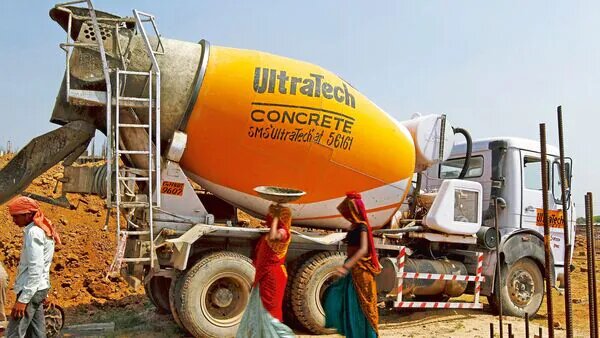In the dynamic world of business, competition often drives innovation and progress. One of the most compelling rivalries in the Indian corporate landscape today is between UltraTech Cement and the Adani Group. Both giants are leading players in the cement industry, with significant investments in infrastructure, construction, and related sectors. As the world increasingly focuses on sustainability and environmental responsibility, this rivalry presents a unique opportunity for both companies to lead the charge in the green transformation of the industry.
The UltraTech-Adani Rivalry: A Brief Overview
UltraTech Cement: UltraTech, part of the Aditya Birla Group, is one of India’s largest and most prominent cement manufacturers. The company has a robust presence in the market, with a diverse range of products and a significant share in both domestic and international markets. UltraTech is known for its extensive network of plants and its commitment to quality and innovation.
Adani Group: The Adani Group, led by Gautam Adani, is a conglomerate with interests spanning multiple sectors, including energy, infrastructure, and logistics. Within the cement sector, Adani has made substantial investments through its Adani Cement division, which has been rapidly expanding its capacity and market presence. The group’s aggressive growth strategy and focus on infrastructure development have made it a formidable competitor in the cement industry.
The Imperative for Green Transformation
The global push for environmental sustainability is reshaping industries across the board. Cement production, a traditionally energy-intensive and polluting process, is at the forefront of this transformation. The cement industry is responsible for a significant share of global CO2 emissions, primarily due to the high energy consumption and the chemical reactions involved in cement production.
The transition to greener practices in the cement industry is essential for several reasons:
- Environmental Impact: Reducing carbon emissions and minimizing environmental degradation are critical for combating climate change. The cement industry’s transition to sustainable practices can significantly contribute to global emission reduction targets.
- Regulatory Pressures: Governments worldwide are implementing stricter environmental regulations and standards. Companies in the cement sector must adapt to these regulations to remain compliant and avoid potential penalties.
- Market Demand: There is a growing demand for green and sustainable construction materials. Consumers and businesses are increasingly prioritizing sustainability in their purchasing decisions, creating a market for eco-friendly products.
- Long-Term Viability: Investing in green technologies and practices can enhance a company’s long-term viability. Sustainable practices can lead to cost savings, operational efficiencies, and improved brand reputation.
The Green Race: UltraTech vs. Adani
The rivalry between UltraTech Cement and Adani Group presents an opportunity to catalyze the green transformation of the cement industry. Here’s how this competition could spur a green race:
1. Investment in Sustainable Technologies
Both companies have the resources and capabilities to invest in cutting-edge technologies that reduce environmental impact. For instance:
- UltraTech Cement has already taken steps towards sustainability with initiatives like the use of alternative fuels and raw materials, and the implementation of energy-efficient technologies. Further investments in carbon capture and storage (CCS) and renewable energy integration could strengthen its green credentials.
- Adani Cement has been focusing on expanding its production capacity and integrating sustainability into its operations. By leveraging the Adani Group’s expertise in renewable energy and infrastructure, Adani Cement could accelerate its efforts in adopting green technologies and practices.
The competition between UltraTech and Adani could lead to a race to develop and deploy the most advanced sustainable technologies, setting new industry standards and driving innovation.
2. Enhancing Operational Efficiency
Operational efficiency plays a crucial role in reducing environmental impact. Both companies are likely to focus on improving their production processes to achieve higher efficiency and lower emissions.
- UltraTech Cement could explore advancements in energy efficiency, such as the adoption of energy-efficient kilns and waste heat recovery systems. Additionally, optimizing supply chain logistics and reducing transportation-related emissions can contribute to overall sustainability.
- Adani Cement might leverage its expertise in logistics and infrastructure to implement efficient transportation and distribution networks. Innovations in process optimization and resource management could also play a significant role in enhancing operational efficiency.
The competitive drive to achieve superior operational efficiency can lead to significant environmental benefits and set benchmarks for the industry.
3. Promoting Green Building Materials
The demand for green building materials is rising as the construction industry seeks sustainable alternatives. Both UltraTech and Adani have the opportunity to lead in this segment by developing and promoting eco-friendly products.
- UltraTech Cement could focus on producing low-carbon cement variants and exploring the use of supplementary cementitious materials (SCMs) that reduce the carbon footprint of its products. Additionally, developing high-performance materials that offer energy efficiency and durability can meet the growing demand for sustainable construction solutions.
- Adani Cement may prioritize the development of innovative green products that align with its sustainability goals. Collaborating with architects and builders to promote the use of eco-friendly materials in construction projects could enhance its market position.
The rivalry between UltraTech and Adani in promoting green building materials can drive advancements in product innovation and sustainability in the construction sector.
4. Corporate Social Responsibility (CSR) and Community Engagement
Both companies are involved in CSR activities, and integrating sustainability into their CSR strategies can amplify their green credentials.
- UltraTech Cement could enhance its CSR initiatives by focusing on environmental conservation projects, such as afforestation and water conservation efforts. Engaging with local communities to promote environmental awareness and sustainability practices can further strengthen its green image.
- Adani Cement might leverage its CSR programs to support sustainable development projects and contribute to environmental conservation. Collaborating with stakeholders to address local environmental challenges and promote green practices can enhance its corporate reputation.
The competition to demonstrate leadership in CSR and community engagement can drive meaningful contributions to sustainability and environmental stewardship.
Disclaimer: The thoughts and opinions stated in this article are solely those of the author and do not necessarily reflect the views or positions of any entities represented and we recommend referring to more recent and reliable sources for up-to-date information.



